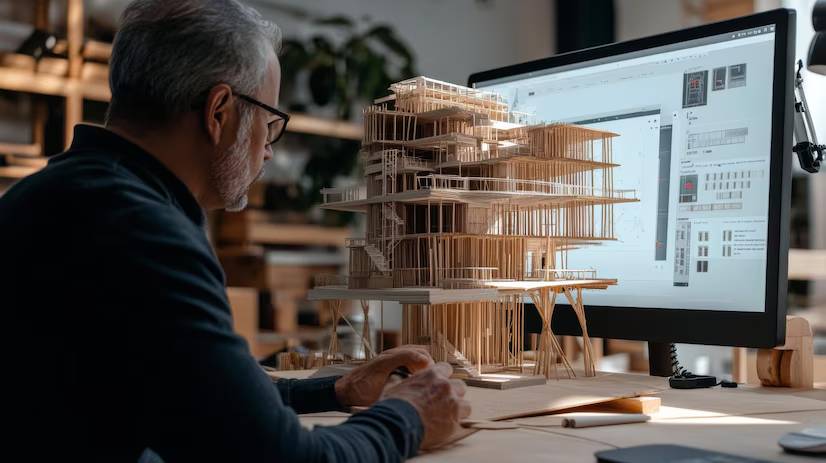Architectural visualization has evolved significantly with advancements in technology, and 3D product animation has become an indispensable tool in this field. This blog delves into how 3D product animation services enhance architectural visualization, and how explainer videos services complement these animations to offer a comprehensive and engaging presentation.
1. Introduction to Architectural Visualization
Architectural visualization refers to the process of creating visual representations of architectural designs before they are built. Traditionally, architects relied on 2D drawings and sketches to convey their concepts. However, these methods often lacked the depth and realism needed to fully communicate the intended design.
In recent years, 3D visualization has revolutionized the industry. By leveraging three-dimensional models, architects can present their designs in a more realistic and immersive manner. This shift has been driven by the need for more effective communication with clients, stakeholders, and the public.
2. The Rise of 3D Product Animation in Architecture
3D product animation services have played a crucial role in advancing architectural visualization. Unlike static images, 3D animations can show how a building or space will look and feel from various angles and perspectives. This dynamic representation allows for a more comprehensive understanding of the design, including how different elements interact and move within the space.
Key Benefits of 3D Product Animation in Architectural Visualization:
- Enhanced Visualization: 3D animations provide a realistic portrayal of architectural designs, allowing viewers to experience the project as if it were already built. This helps in conveying the scale, proportions, and aesthetics of the design more effectively than traditional methods.
- Dynamic Presentations: Animated walkthroughs and flythroughs enable viewers to explore a building’s interior and exterior dynamically. This interactive approach helps clients and stakeholders visualize how spaces will look and function in real life.
- Realistic Lighting and Materials: 3D animations can accurately simulate how natural and artificial lighting will affect a space. This includes the interaction of light with different materials and finishes, providing a realistic preview of how the final design will appear throughout the day.
- Improved Design Communication: For architects and designers, presenting an animated model helps bridge the gap between their vision and the client’s understanding. It allows clients to see the project in context, making it easier to discuss potential changes and improvements.
3. The Role of Explainer Videos in Complementing 3D Product Animation
While 3D product animation provides a detailed visual representation, explainer videos services can enhance the presentation by adding contextual information, narration, and storytelling elements. Explainer videos are short, engaging videos designed to explain concepts or showcase products in a clear and concise manner.
Integrating Explainer Videos with 3D Product Animation:
- Narration and Voiceover: Adding a voiceover to a 3D animation can help explain design features and functionalities. This narrative can guide viewers through the animation, highlighting key aspects of the project and providing additional context.
- Storytelling: Explainer videos can incorporate storytelling techniques to make the presentation more engaging. By crafting a narrative around the architectural design, viewers can better understand the purpose and vision behind the project.
- Educational Content: Explainer videos can provide educational content about the architectural design process, materials used, and sustainable features. This adds value to the 3D animation by offering informative content that enhances the viewer’s understanding.
- Call to Action: In cases where the goal is to attract investors or clients, explainer videos can include a call to action. This could be an invitation to schedule a meeting, visit the site, or explore further details about the project.
4. Case Studies and Examples
To illustrate the impact of 3D product animation and explainer videos on architectural visualization, let’s look at a few real-world examples:
Case Study 1: Residential Development Project
A real estate developer wanted to showcase a new residential complex to potential buyers. Using 3D product animation, the developer created an animated walkthrough of the property, highlighting key features such as the layout, amenities, and views. The animation included realistic lighting and material simulations, giving viewers a true sense of the living experience.
Complementing the animation, the developer produced an explainer video that narrated the benefits of living in the complex, including the neighborhood’s amenities and the developer’s commitment to quality. This combination of 3D animation and explainer video helped attract interest and generate pre-sales for the property.
Case Study 2: Commercial Office Space
An architectural firm was tasked with designing a new office building for a technology company. The firm used 3D product animation to create a detailed representation of the office layout, including furniture arrangements and collaborative spaces. The animation also showcased different design options and configurations.
To further enhance the presentation, the firm produced an explainer video that provided insights into the design process, the firm’s approach to creating an innovative workspace, and the benefits of the proposed design. This helped the client make informed decisions and provided a clear vision of the final product.
Case Study 3: Urban Redevelopment Project
A city planning organization needed to present a proposal for an urban redevelopment project. They used 3D product animation to create a visual representation of the proposed changes, including new buildings, public spaces, and transportation infrastructure.
The accompanying explainer video provided an overview of the project’s goals, its impact on the community, and the benefits of the redevelopment. This combination of visual and informational content helped the organization gain support from stakeholders and the public.
5. Future Trends and Innovations
The use of 3D product animation and explainer videos in architectural visualization continues to evolve, driven by advancements in technology and changing client expectations. Some emerging trends and innovations include:
- Virtual Reality (VR) Integration: Combining 3D animations with VR technology allows viewers to experience architectural designs in an immersive virtual environment. This enhances the realism and interactivity of the visualization.
- Augmented Reality (AR): AR applications can overlay 3D animations onto real-world environments, allowing clients to visualize how a design will fit into an existing space.
- Real-Time Rendering: Advances in real-time rendering technology enable interactive 3D animations that can be manipulated in real-time, providing a more dynamic and responsive presentation.
- AI and Machine Learning: AI and machine learning are being used to automate aspects of 3D animation and enhance the accuracy of simulations, such as predicting how different materials will react to light.
6. Conclusion
3D product animation services have become a vital tool in architectural visualization, providing a realistic and dynamic representation of architectural designs. When combined with explainer videos services, these animations offer a comprehensive and engaging presentation that enhances communication with clients and stakeholders.
As technology continues to advance, the role of 3D product animation and explainer videos in architecture will likely expand, offering even more innovative ways to visualize and present architectural projects. Embracing these tools can help architects and developers effectively convey their vision, attract interest, and ultimately bring their designs to life.
By leveraging the power of 3D product animation and explainer videos, the architectural industry can continue to push the boundaries of visualization, making it easier for clients and stakeholders to understand and appreciate the complexities of architectural designs.




